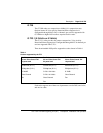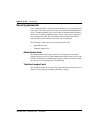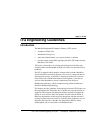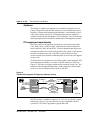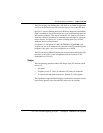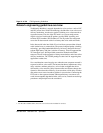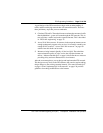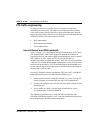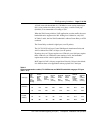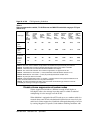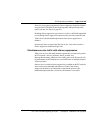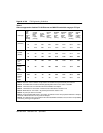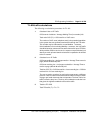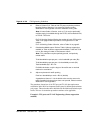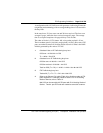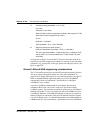
ITG Engineering Guidelines Page 77 of
378
ITG Trunk 2.0 ISDN Signaling Link (ISL) Description, Installation and Operation
A WAN route with bandwidth of 1.536 Mbit/s or more can be loaded up to
80% (voice packets must have priority over data), a smaller WAN pipe
(64 kbit/s) is recommended to a loading of 50%.
When the WAN route prioritizes VoIP application over data traffic, the route
bandwidth can be engineered to 90% loading level. Otherwise, only 80%.
In Tables 5 and 6, the first WAN bandwidth is without Frame Relay or ATM
overhead.
The Frame Relay overhead is eight bytes (over IP packet).
The LLC SNAP (Link Layer Control SubNetwork Attachment Point) and
AAL5 overhead for ATM is 16 bytes (over IP packet).
IP packet size over 53 bytes requires two ATM cells, over 106 bytes requires
three ATM cells, etc. Within the same number of cells, the bandwidth
requirements are the same for packets with different sizes.
MAT input for FAX is in bytes (ranged from 20 to 48), 30-byte is the default.
It is different from voice applications where payload size is the input.
Table 5
Silence suppression enabled, T-LAN Ethernet and WAN IP bandwidth usage per ITG port
(Part 1 of 2)
Codec type
Codec
Multi -
frame
duration
in ms
(payload)
(one way)
Voice/fax
payload
Multi -
frame
in bytes
(one way)
IP voice
packet in
bytes
(one way)
Ethernet
voice
packet in
bytes
(one way)
Bandwidth
use on
T-LAN in
kbit/s
(two way)
Bandwidth
use on
WAN in
kbit/s
(one way)
WAN with
Frame
Relay
overhead
in kbit/s
(one-way)
WAN with
ATM
overhead
in kbit/s
(one-way)
G.711
(64 kbit/s)
10 80 120 146 140.2 57.6 61.4 76.3
20 160 200 226 108.5 48.0 49.9 63.6
30 240 280 306 97.9 44.8 46.1 59.4
G.729AB
G.729A
(8 kbit/s)
10 10 50 76 73.0 24.0 27.8 50.9
20 20 60 86 41.3 14.4 16.3 25.4
30 30 70 96 30.7 11.2 12.5 17.0



